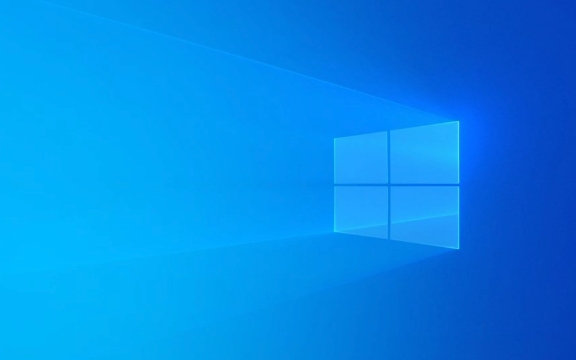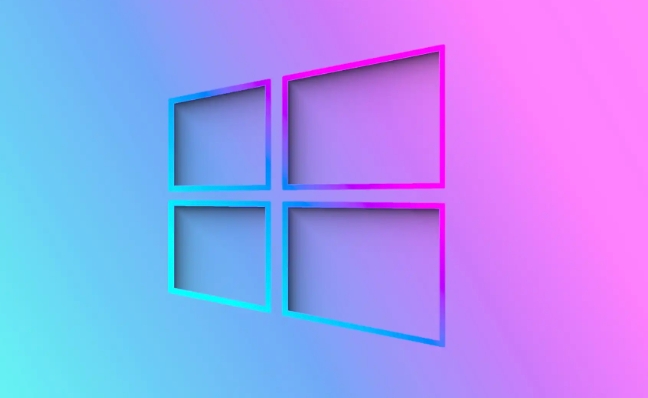For a local account, press Ctrl Alt Delete and select Change password, or go to Settings > Accounts > Sign-in options and click Change under Password, then enter current and new passwords and confirm. 2. For a Microsoft account, visit http://ipnx.cn/link/a596c69468e85ae53014c825e9079543, sign in, go to Security > Change password, verify identity, enter current and new passwords, and save changes, which will sync to your Windows device at next login. 3. Using Control Panel, open it from Start, go to User Accounts twice, select the account, click Change the password, enter details including a hint, and confirm. 4. An admin can change another user’s password via Computer Management > Local Users and Groups > Users, right-click the account, choose Set Password, and enter a new one, noting this bypasses the old password requirement. Always create a strong password with letters, numbers, and symbols, and update saved passwords in apps or browsers as needed.

Changing your password in Windows is a straightforward process, whether you're using a local account or a Microsoft account. Here’s how to do it depending on your setup.

1. Change Password for a Local Account
If you're using a local user account (not signed in with an email), follow these steps:
- Press Ctrl Alt Delete on your keyboard.
- Click on Change password from the options screen.
- Enter your current password, then type your new password and confirm it.
- Click the right arrow or press Enter to save.
Alternatively, you can:

- Press Windows key I to open Settings.
- Go to Accounts > Sign-in options.
- Under Password, click Change.
- Follow the prompts to enter your current and new passwords.
- Click Next > Finish.
Note: If you're on a work or school PC managed by an organization, this option might be restricted.
2. Change Password for a Microsoft Account
If you're signed in with a Microsoft account (using an email like @outlook.com or @hotmail.com):

- You cannot change the password directly in Windows Settings.
- Instead, go to http://ipnx.cn/link/a596c69468e85ae53014c825e9079543 and sign in.
- Go to Security > Change password.
- Verify your identity (via email, phone, or authenticator app).
- Enter your current password and choose a new one.
- Save the changes.
After updating it online, use the new password the next time you log in to your Windows device.
3. Using Control Panel (Legacy Method)
You can also use the classic Control Panel:
- Open Control Panel (search for it in the Start menu).
- Click User Accounts, then User Accounts again.
- Choose Manage another account if needed, select your account.
- Click Change the password.
- Enter the current and new password, add a password hint, and click Change password.
4. Admin Changing Another User’s Password
If you’re an administrator and need to change someone else’s password:
- Open Computer Management (right-click Start > Computer Management).
- Go to Local Users and Groups > Users.
- Right-click the user account > Set Password.
- Click Proceed and enter the new password.
?? Use this carefully—it bypasses the need for the old password.
Make sure your new password is strong: use a mix of letters, numbers, and symbols. Also, remember to update saved passwords in browsers or apps if needed.
Basically, just pick the method that matches your account type—local or Microsoft—and follow the steps.
The above is the detailed content of How to change password in Windows. For more information, please follow other related articles on the PHP Chinese website!

Hot AI Tools

Undress AI Tool
Undress images for free

Undresser.AI Undress
AI-powered app for creating realistic nude photos

AI Clothes Remover
Online AI tool for removing clothes from photos.

Clothoff.io
AI clothes remover

Video Face Swap
Swap faces in any video effortlessly with our completely free AI face swap tool!

Hot Article

Hot Tools

Notepad++7.3.1
Easy-to-use and free code editor

SublimeText3 Chinese version
Chinese version, very easy to use

Zend Studio 13.0.1
Powerful PHP integrated development environment

Dreamweaver CS6
Visual web development tools

SublimeText3 Mac version
God-level code editing software (SublimeText3)
 How to Change Font Color on Desktop Icons (Windows 11)
Jul 07, 2025 pm 12:07 PM
How to Change Font Color on Desktop Icons (Windows 11)
Jul 07, 2025 pm 12:07 PM
If you're having trouble reading your desktop icons' text or simply want to personalize your desktop look, you may be looking for a way to change the font color on desktop icons in Windows 11. Unfortunately, Windows 11 doesn't offer an easy built-in
 Fixed Windows 11 Google Chrome not opening
Jul 08, 2025 pm 02:36 PM
Fixed Windows 11 Google Chrome not opening
Jul 08, 2025 pm 02:36 PM
Fixed Windows 11 Google Chrome not opening Google Chrome is the most popular browser right now, but even it sometimes requires help to open on Windows. Then follow the on-screen instructions to complete the process. After completing the above steps, launch Google Chrome again to see if it works properly now. 5. Delete Chrome User Profile If you are still having problems, it may be time to delete Chrome User Profile. This will delete all your personal information, so be sure to back up all relevant data. Typically, you delete the Chrome user profile through the browser itself. But given that you can't open it, here's another way: Turn on Windo
 How to fix second monitor not detected in Windows?
Jul 12, 2025 am 02:27 AM
How to fix second monitor not detected in Windows?
Jul 12, 2025 am 02:27 AM
When Windows cannot detect a second monitor, first check whether the physical connection is normal, including power supply, cable plug-in and interface compatibility, and try to replace the cable or adapter; secondly, update or reinstall the graphics card driver through the Device Manager, and roll back the driver version if necessary; then manually click "Detection" in the display settings to identify the monitor to confirm whether it is correctly identified by the system; finally check whether the monitor input source is switched to the corresponding interface, and confirm whether the graphics card output port connected to the cable is correct. Following the above steps to check in turn, most dual-screen recognition problems can usually be solved.
 Want to Build an Everyday Work Desktop? Get a Mini PC Instead
Jul 08, 2025 am 06:03 AM
Want to Build an Everyday Work Desktop? Get a Mini PC Instead
Jul 08, 2025 am 06:03 AM
Mini PCs have undergone
 Fixed the failure to upload files in Windows Google Chrome
Jul 08, 2025 pm 02:33 PM
Fixed the failure to upload files in Windows Google Chrome
Jul 08, 2025 pm 02:33 PM
Have problems uploading files in Google Chrome? This may be annoying, right? Whether you are attaching documents to emails, sharing images on social media, or submitting important files for work or school, a smooth file upload process is crucial. So, it can be frustrating if your file uploads continue to fail in Chrome on Windows PC. If you're not ready to give up your favorite browser, here are some tips for fixes that can't upload files on Windows Google Chrome 1. Start with Universal Repair Before we learn about any advanced troubleshooting tips, it's best to try some of the basic solutions mentioned below. Troubleshooting Internet connection issues: Internet connection
 How to clear the print queue in Windows?
Jul 11, 2025 am 02:19 AM
How to clear the print queue in Windows?
Jul 11, 2025 am 02:19 AM
When encountering the problem of printing task stuck, clearing the print queue and restarting the PrintSpooler service is an effective solution. First, open the "Device and Printer" interface to find the corresponding printer, right-click the task and select "Cancel" to clear a single task, or click "Cancel all documents" to clear the queue at one time; if the queue is inaccessible, press Win R to enter services.msc to open the service list, find "PrintSpooler" and stop it before starting the service. If necessary, you can manually delete the residual files under the C:\Windows\System32\spool\PRINTERS path to completely solve the problem.
 How to run Command Prompt as an administrator in Windows 10?
Jul 05, 2025 am 02:31 AM
How to run Command Prompt as an administrator in Windows 10?
Jul 05, 2025 am 02:31 AM
To run command prompts as administrator, the most direct way is to search through the Start menu and right-click "Run as administrator"; secondly, use the Win X shortcut menu to select "Command Prompt (Administrator)" or "Windows Terminal (Administrator)"; you can also open the run window through Win R and enter cmd and press Ctrl Shift Enter to force running as administrator; in addition, you can set shortcut properties to achieve automatic running as administrator. All the above methods require administrator permission and confirmation through UAC. Pay attention to security risks during operation.







